2.5x Increase in Click-Through Rate
First pancake
Together with Math & Mind, we developed an AMP email, where we asked the user to answer several questions directly in the email.
The original version of the letter looked like this:
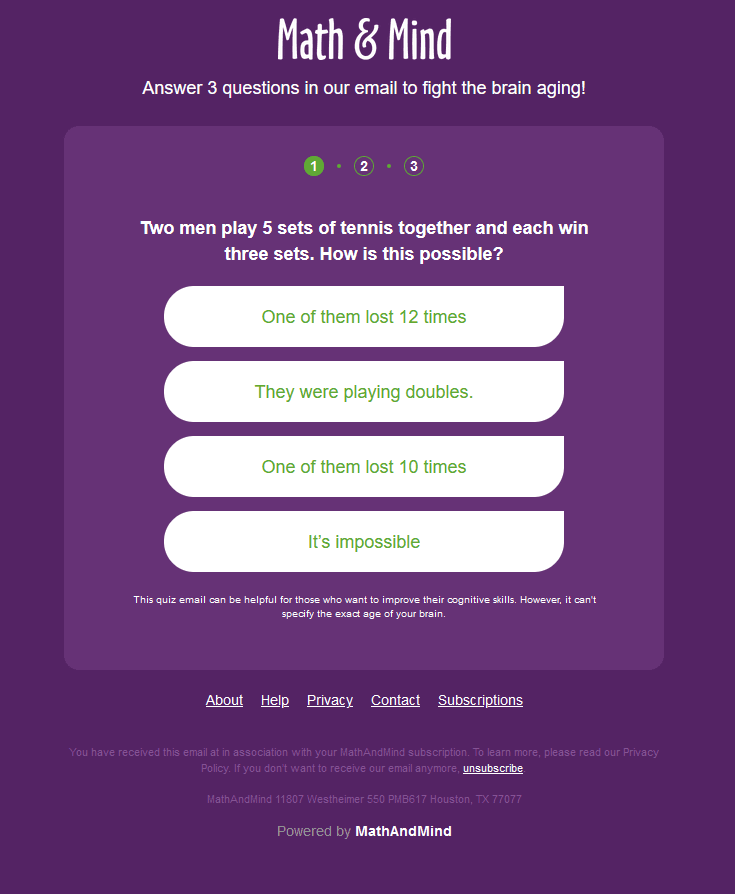
We sent it to a small test sample to check how this mechanic would work. And, to our surprise, the letter did not show any results different from a regular html letter.
Work on mistakes
The fact is that subscribers are not yet accustomed to interactive letters, especially since it was visually no different from what was sent before. Users expected that this was the most ordinary letter and that upon clicking on the answer they would be redirected to the site.
To visually “revive” the letter and show that you can interact with it, we added a carousel on top with an increasing timer “your brain age”
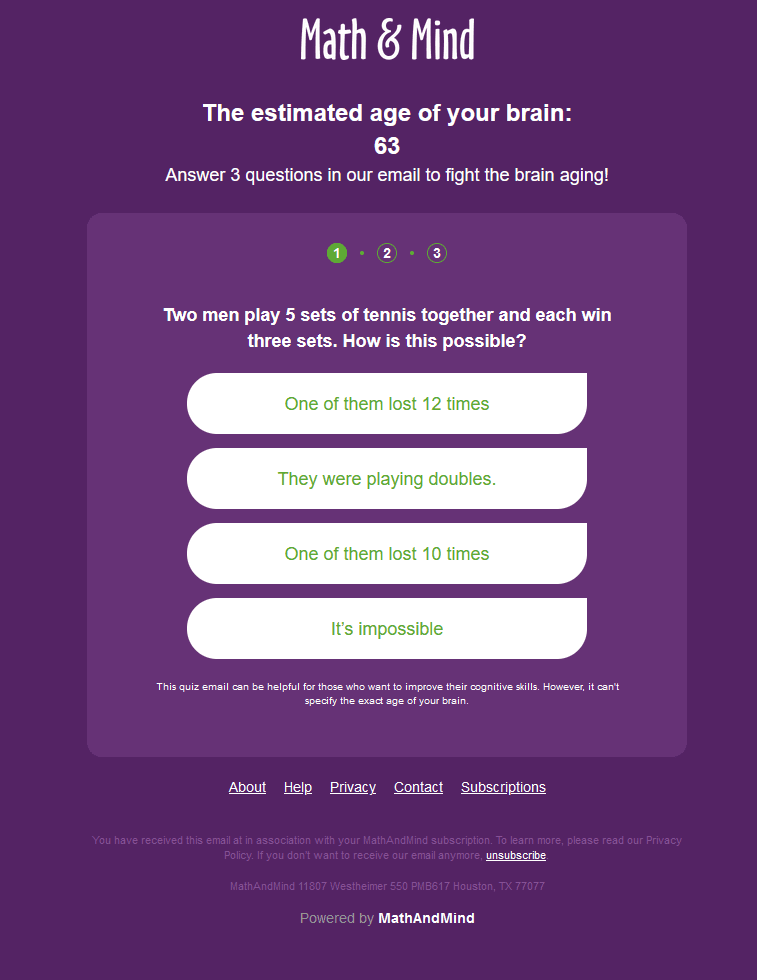
This turned out to be the missing link: the test sample showed good results, and the letter was sent to the main audience.
Results
We tracked the openings of the HTML and AMP versions separately. Unique discoveries were distributed as follows:
*HTML – 64.63%
*AMP – 35.37%
If you look at non-unique discoveries, then:
*HTML – 62.8%
*AMP – 37.2%

This allows us to draw an unambiguous conclusion: people are more likely to return to AMP emails.
To find out how users behave inside the letter, we installed tracking pixels on each question in our quiz: to understand the outflow of the audience, that is, how interesting such mechanics are to subscribers.
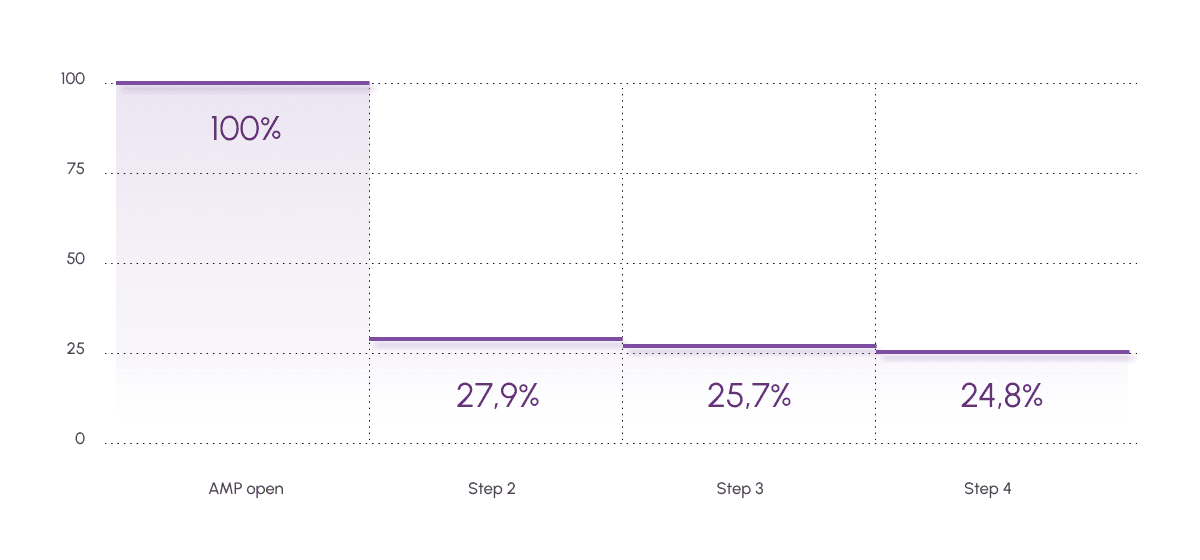
The first step is 100% of users who opened the AMP version of the letter.
Answered the first question – 27.9%
On the second – 25.7%
And for the last one – 24.8%.
We see minimal audience outflow. That is, if the user has taken the first step, then with a high probability he will go all the way.
After passing this mini-quiz, we invite the user to go to the site and play some more. And here users are more loyal and interested, so they willingly go to the site. We separately tracked transitions to the site from the HTML and AMP versions of the email and these are the values we got:
HTML – 6.95%
AMP – 32.54%
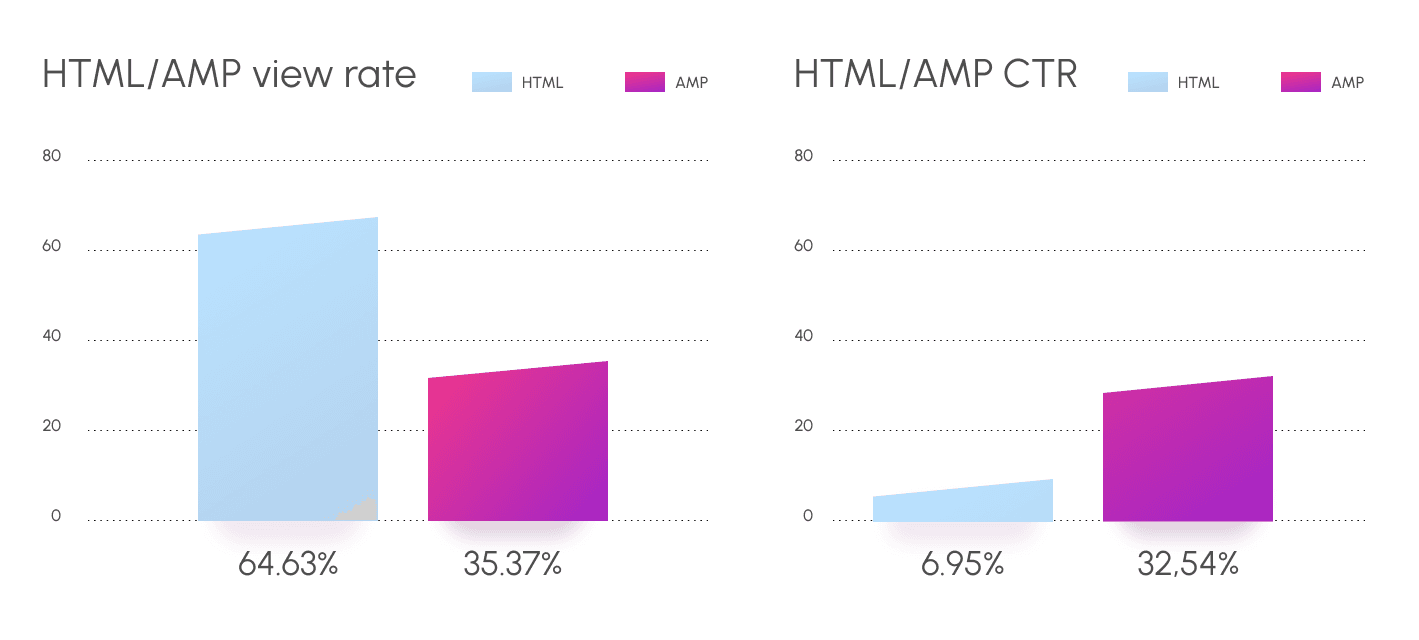
This is how you can graphically present the resulting OR and CTR indicators with highlighting what part is accounted for by HTML and AMP openings and transitions.
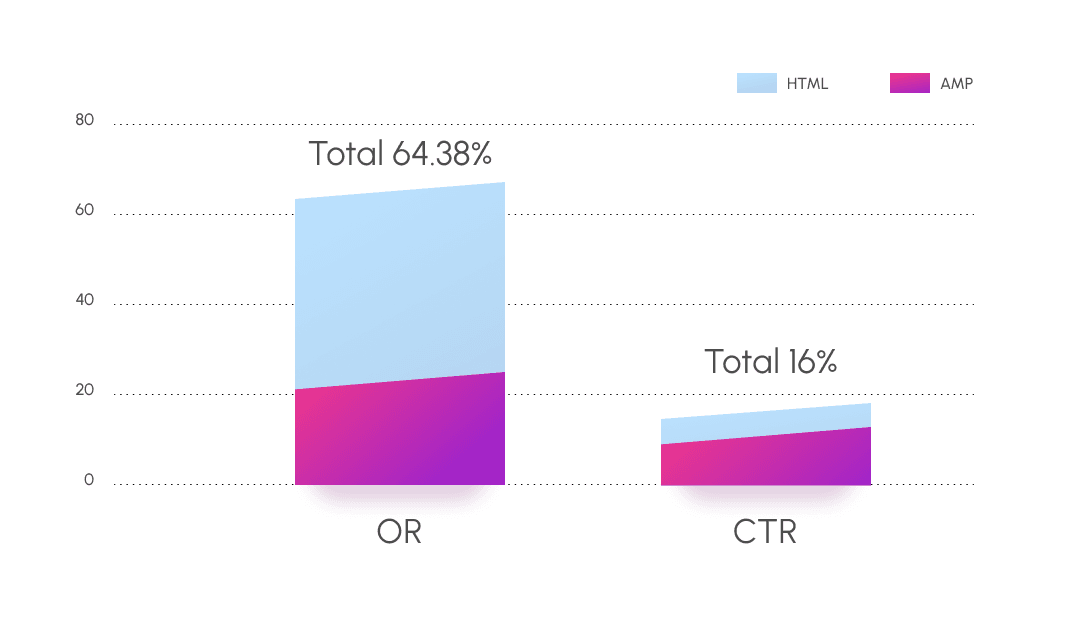
From this we can conclude that the use of AMP technology and the gradual involvement of the subscriber has significantly increased the CTR!
